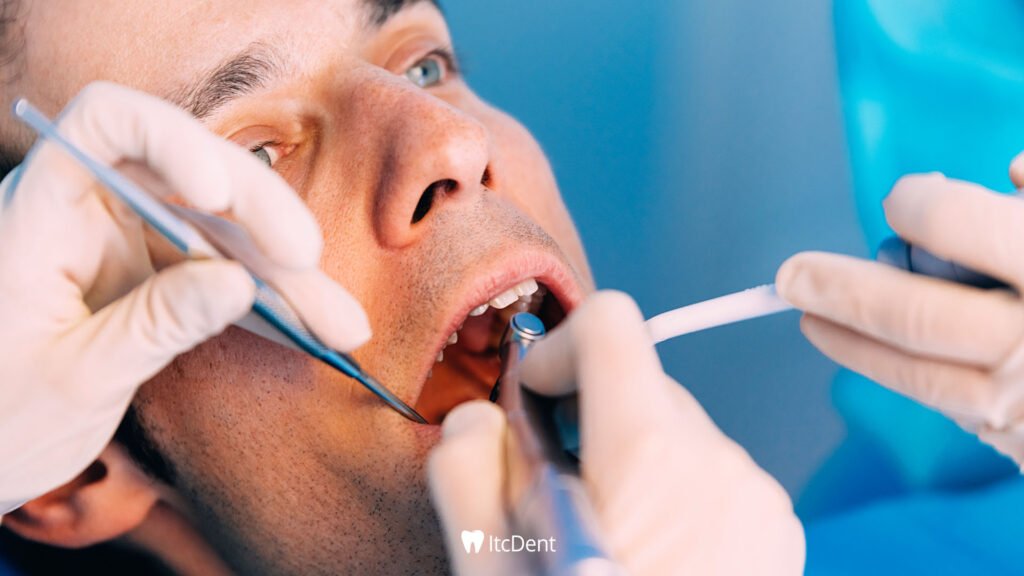Inflammation After Tooth Extraction
Tooth extraction is a common procedure in dentistry and is usually preferred as a last resort. A tooth extracted for reasons such as decay, gum disease or trauma is an important step in maintaining oral health. However, there are some situations that need to be taken into consideration after tooth extraction. In particular, one of the complications that may occur in the extraction area is inflammation.
Inflammation after tooth extraction usually occurs as a result of bacterial infection and can lead to serious pain, swelling and even greater health problems if neglected. This can be quite uncomfortable for patients and can prolong the healing process.
What Causes Inflammation After Tooth Extraction?
Inflammation after tooth extraction can develop due to various factors and can negatively affect the healing process. This condition usually occurs as a result of infection and can lead to serious complications if appropriate precautions are not taken. The most common causes of inflammation after tooth extraction are as follows:
1. Bacterial Infection
The mouth is an environment that naturally contains millions of bacteria. The space left after tooth extraction becomes an open wound and creates a suitable environment for bacterial growth. If oral hygiene is not taken care of or the wound area is not adequately protected, bacteria can multiply rapidly and cause infection. Especially in the case of the extraction of a decayed or infected tooth, the bacterial load in the area can be higher and the risk of infection increases.
2. Lack of Hygiene
Taking care of oral hygiene after tooth extraction is of critical importance to minimize the risk of infection. If the mouth is not kept clean enough after tooth extraction, food residues and bacterial accumulation in the extraction area can accelerate. Especially in the first few days, care should be taken when cleaning the extraction area and oral care should be performed as recommended by the doctor.
3. Gum Disease
If gum disease was present before the tooth was extracted, there is a higher chance of post-extraction inflammation. Periodontal disease (gingivitis and advanced gum disease) means that there is already an infection and bacterial accumulation in the gums. In this case, the healing process after tooth extraction can be more complicated and the infection can spread more easily.

4. Poor Nutrition and Smoking
Healthy nutrition is an important factor that accelerates the body’s healing process. Inadequate nutrition can cause the immune system to weaken and become vulnerable to infections. Vitamin C deficiency, in particular, can negatively affect wound healing.
Smoking is a habit that seriously delays the healing process after tooth extraction. Smoking negatively affects blood circulation, making it difficult to transport sufficient oxygen and nutrients to the extraction site. At the same time, the chemicals in tobacco products pave the way for bacteria in the mouth to multiply and increase the risk of infection.
5. Tissue Damage During Tooth Extraction
Tooth extraction can sometimes be a challenging procedure, and especially during the extraction of impacted teeth or broken teeth, the surrounding soft tissues can be damaged. Small tears in the gums or jawbone can pave the way for infection. In addition, failure to completely remove the tooth root during extraction or leaving a piece of tooth tissue in the area can also cause infection.
Symptoms of Inflammation After Tooth Extraction
Mild pain, swelling and discomfort are completely normal after tooth extraction. However, if these symptoms do not subside within a few days and on the contrary, they become more severe, an infection may be present. The most common symptoms of inflammation after tooth extraction are:
- Unrelieved and Intensifying Pain
It is natural to feel mild to moderate pain in the first few days after tooth extraction. However, if the pain gradually increases, especially if it does not go away despite painkillers or if it becomes throbbing, this may be a sign of infection.
- Excessive Swelling and Redness

Slight swelling after extraction is normal and usually subsides within the first 48 hours. However, if the swelling is greater than expected, or if there is significant redness and tenderness in the cheek or gum, this may be a sign of infection.
- Foul-Smelling and Bad-Tasting Discharge
A foul-smelling discharge from the extraction site is usually a sign of infection. If there is a persistent bad taste in the mouth and a yellow or white discharge coming from the extraction site, an infection may have developed.
- Fever and General Weakness
One of the body’s natural responses to fighting an infection is a fever. If you have a fever after a tooth extraction and feel weak and tired, this may be a sign that your immune system is reacting to the infection.
- Swollen and Tender Lymph Nodes
The lymph nodes located under the jaw or in the neck can become swollen and tender in the event of an infection. If you notice painful swellings in your jawline, this may be a sign that the infection has spread.
What to Do to Prevent Inflammation After Tooth Extraction?
The following precautions should be taken to prevent inflammation after tooth extraction:
- Follow Your Dentist’s Recommendations: Use the medications given after extraction regularly and follow the instructions given by your doctor completely.
- Pay Attention to Oral Hygiene: The mouth should not be rinsed for the first 24 hours after extraction, but you can gargle with salt water as recommended by your doctor afterwards.
- Do Not Smoking and Alcohol: Smoking delays wound healing and increases the risk of infection. Alcohol can also increase bleeding and make healing more difficult.
- Eat a Balanced Diet: Consume healthy and vitamin-rich foods to strengthen your immune system.
- Apply Cold Compress to Prevent Swelling: Applying cold compresses externally for the first 24 hours can help reduce swelling and pain.
- Do Not Touch the Extraction Area with Your Tongue and Hands: Touching the wound can lead to infection.

How is Infection Treated After Tooth Extraction?
If inflammation develops after tooth extraction, different treatment methods can be applied depending on the case:
- Use of Antibiotics: Antibiotics prescribed by the dentist help control the infection.
- Painkillers: In cases of severe pain, your doctor may prescribe painkillers. However, you should use the medications recommended by your doctor.
- Professional Cleaning: In some cases, the dentist may intervene to clean the inflammation that has accumulated in the extraction area.
- Salt Water Gargle: In cases of mild infection, gargling with salt water can help reduce bacteria.
- Advanced Treatments: If the infection has spread or an abscess has formed, the dentist may perform a drainage procedure and apply additional treatments.


